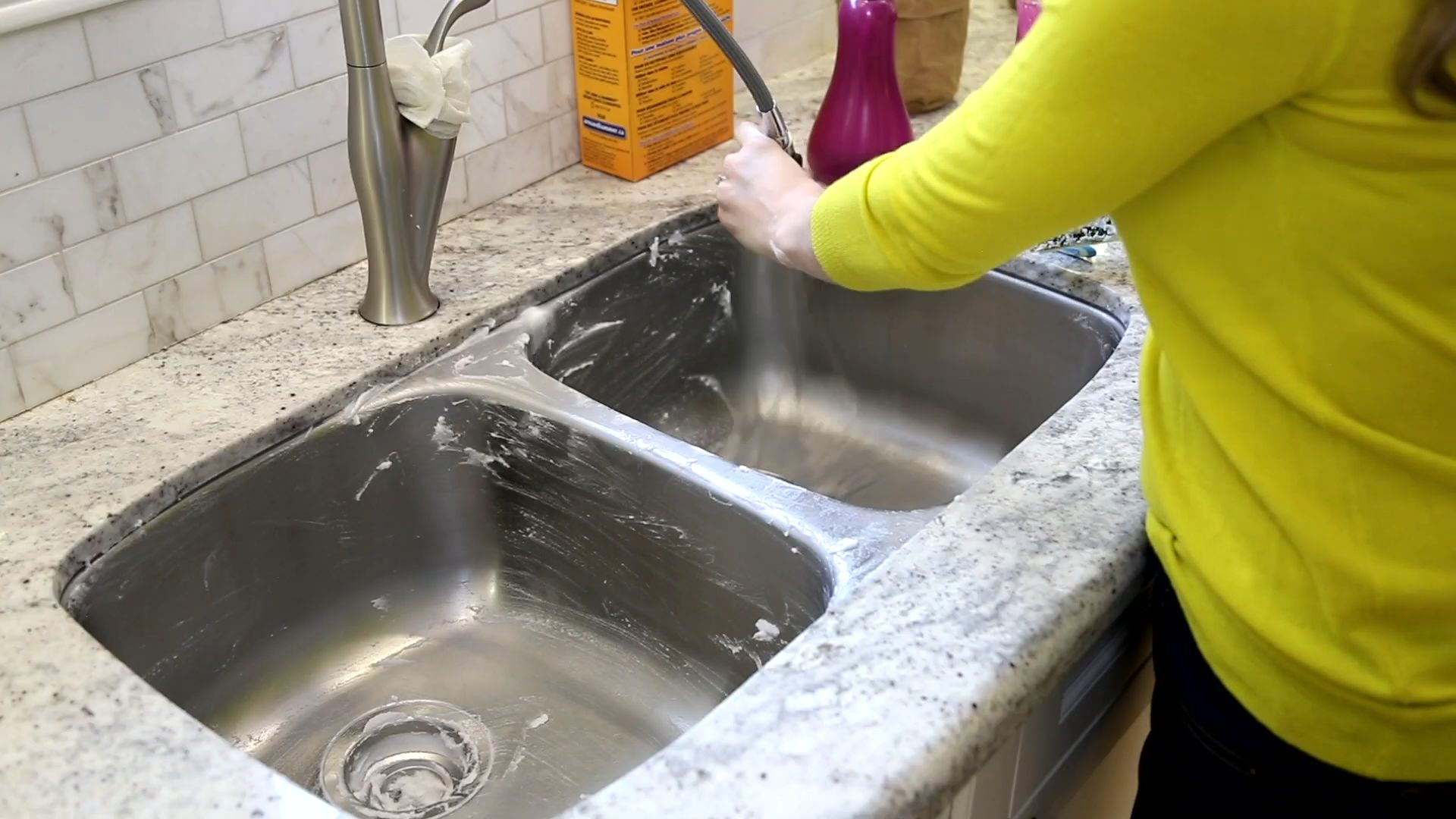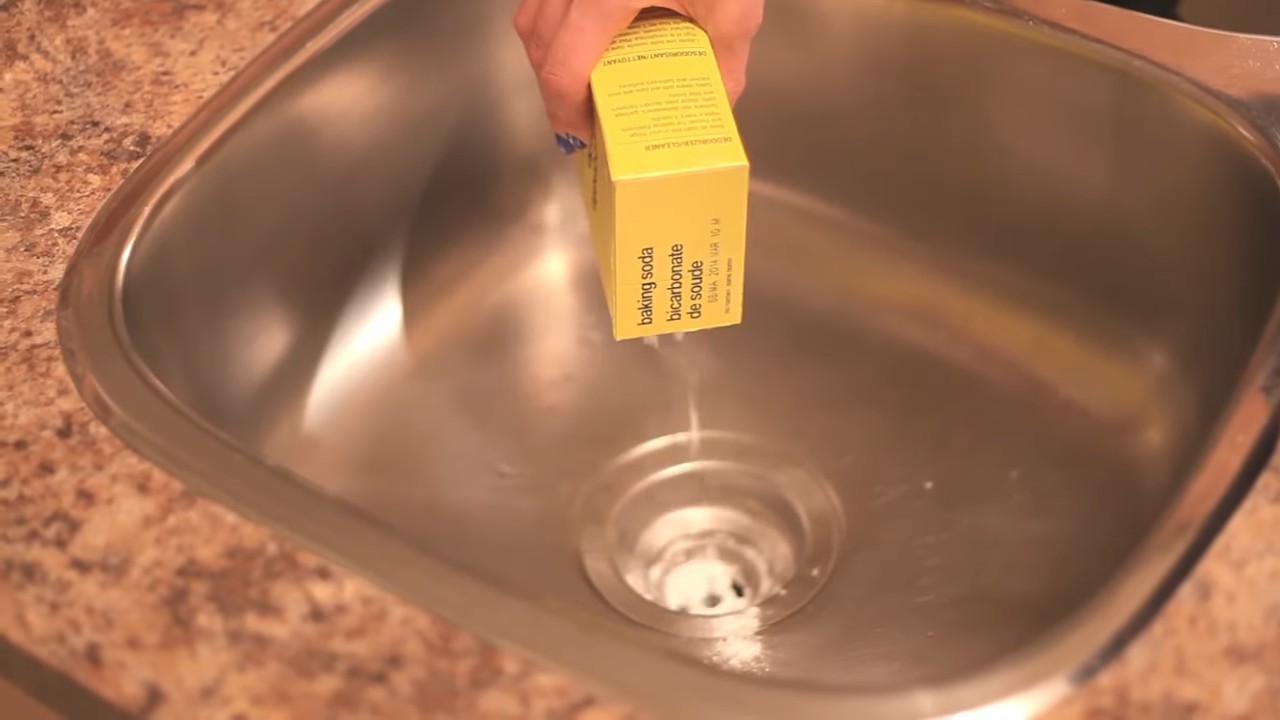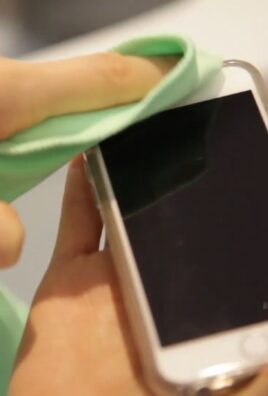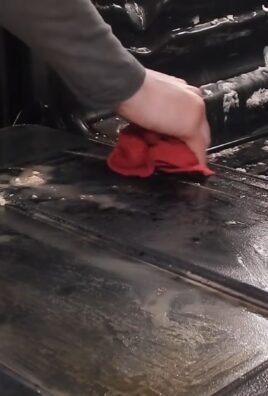Baking Soda Cleaning Tricks: Unlock the sparkling potential hidden in your pantry! Are you tired of harsh chemicals and expensive cleaning products that promise the world but deliver… well, less than stellar results? I know I was! That’s why I dove headfirst into the world of DIY cleaning, and let me tell you, the results have been amazing.
For generations, baking soda, also known as sodium bicarbonate, has been a household staple. From ancient Egyptians using it in their cleaning rituals to our grandmothers relying on it for everything from baking to deodorizing, this humble powder has a rich history. But did you know it’s also a powerhouse when it comes to cleaning?
In today’s world, we’re all looking for ways to simplify our lives, save money, and reduce our environmental impact. That’s where these baking soda cleaning tricks come in. I’m going to share some of my favorite, tried-and-true methods for using baking soda to tackle everything from stubborn stains to lingering odors. Get ready to ditch the harsh chemicals and embrace the natural cleaning power of baking soda! You’ll be amazed at how effective and versatile it is, and your wallet (and the planet!) will thank you.

Baking Soda: Your Secret Weapon for a Sparkling Home
Okay, friends, let’s talk about baking soda. You probably have a box sitting in your fridge, maybe to absorb odors, but did you know it’s a powerhouse cleaner? Seriously, this humble ingredient can tackle everything from stubborn stains to grimy ovens. I’m going to walk you through some of my favorite baking soda cleaning hacks that will leave your home sparkling without breaking the bank or exposing you to harsh chemicals. Get ready to be amazed!
General Baking Soda Cleaning Tips
Before we dive into specific projects, let’s cover some ground rules for using baking soda effectively:
* Always test in an inconspicuous area first. While baking soda is generally gentle, it can be abrasive on some surfaces. A quick test will prevent any unwanted damage.
* Use warm water. Warm water helps baking soda dissolve and activate its cleaning power.
* Don’t mix with vinegar in a closed container. This creates carbon dioxide, which can cause pressure buildup and potentially explode. It’s fine to use them sequentially, but not together in a sealed space.
* Rinse thoroughly. Baking soda can leave a white residue if not rinsed properly.
* Embrace the paste! A baking soda paste (baking soda mixed with a little water) is your best friend for tackling tough stains and grime.
Cleaning Your Oven with Baking Soda
Oven cleaning is the chore we all dread, right? But with baking soda, it becomes surprisingly manageable. Forget those harsh chemical cleaners!
1. Remove oven racks and clean them separately. I usually soak mine in a bathtub filled with hot, soapy water. You can even add a cup of baking soda to the water for extra cleaning power. Let them soak for a few hours, then scrub away the grime.
2. Make a baking soda paste. In a bowl, mix 1/2 cup of baking soda with enough water to form a spreadable paste.
3. Coat the inside of your oven with the paste. Spread the paste evenly over all interior surfaces, avoiding the heating elements. I like to use my hands (with gloves, of course!) to really get into all the nooks and crannies.
4. Let it sit overnight (or for at least 12 hours). This is the magic step! The baking soda needs time to work its way into the baked-on grease and grime.
5. Wipe out the oven. After the waiting period, use a damp cloth or sponge to wipe away the baking soda paste. You might need to use a little elbow grease for stubborn spots.
6. Rinse thoroughly. Rinse the oven with clean water to remove any remaining baking soda residue.
7. Replace the oven racks. Once everything is dry, put the racks back in, and you’re done! A sparkling clean oven, without the harsh chemicals.
Freshening Your Mattress with Baking Soda
Did you know your mattress can harbor dust mites, dead skin cells, and odors? Yuck! Baking soda to the rescue!
1. Strip your bed. Remove all sheets, blankets, and pillowcases. Wash them according to their care instructions.
2. Sprinkle baking soda generously over the entire mattress. Don’t be shy! You want a good, even coating.
3. Let it sit for several hours (ideally, all day). The longer it sits, the more odors and moisture it will absorb. I usually do this on a sunny day and open the windows to air out the room.
4. Vacuum the mattress thoroughly. Use the upholstery attachment on your vacuum cleaner to remove all the baking soda. Make sure to get into all the crevices and seams.
5. Flip the mattress and repeat on the other side. This ensures that both sides are thoroughly cleaned and deodorized.
6. Put your clean bedding back on. Enjoy your fresh, clean mattress!
Cleaning Grout with Baking Soda
Grimey grout can make even the cleanest bathroom look dirty. Here’s how to tackle it with baking soda:
1. Make a baking soda paste. Mix baking soda with a little water to form a thick paste.
2. Apply the paste to the grout lines. Use an old toothbrush or grout brush to scrub the paste into the grout.
3. Let it sit for a few minutes. This allows the baking soda to loosen the dirt and grime.
4. Spray with vinegar. This will cause a fizzing reaction that helps to further break down the grime.
5. Scrub again. Use the toothbrush or grout brush to scrub the grout lines again.
6. Rinse thoroughly with water. Use a damp cloth or sponge to wipe away the baking soda and vinegar residue.
7. Dry with a clean towel. This will prevent water spots and mildew growth.
Unclogging Drains with Baking Soda
A clogged drain is a major inconvenience. Before you reach for harsh chemical drain cleaners, try this baking soda trick:
1. Pour about 1 cup of baking soda down the drain.
2. Follow with 1 cup of vinegar.
3. Let it fizz for 30 minutes. The fizzing action helps to break down the clog.
4. Flush with hot water. After 30 minutes, pour a kettle of boiling water down the drain to flush away the clog.
5. Repeat if necessary. If the drain is still clogged, repeat the process. For stubborn clogs, you might need to use a plunger after the baking soda and vinegar treatment.
Cleaning Burnt Food from Pots and Pans with Baking Soda
Burnt food stuck to the bottom of your pots and pans? Don’t despair! Baking soda can help.
1. Fill the pot or pan with water. Make sure the water covers the burnt food.
2. Add 2 tablespoons of baking soda.
3. Bring the water to a boil.
4. Simmer for 15-30 minutes. This will help to loosen the burnt food.
5. Let it cool slightly.
6. Scrub with a non-abrasive sponge or scrub brush. The burnt food should come off easily.
7. Wash as usual.
Deodorizing Your Refrigerator with Baking Soda
We all know baking soda can absorb odors in the fridge, but here’s how to maximize its effectiveness:
1. Place an open box of baking soda in the refrigerator. This is the classic method, and it works well for general odor absorption.
2. For stronger odors, make a baking soda paste. Mix baking soda with a little water to form a paste.
3. Apply the paste to the affected areas. For example, if you spilled something in the fridge, apply the paste to the spill area.
4. Let it sit for a few minutes.
5. Wipe away the paste with a damp cloth.
6. Replace the open box of baking soda every month. This ensures that it continues to absorb odors effectively.
Cleaning Coffee and Tea Stains from Mugs with Baking Soda
Those stubborn coffee and tea stains in your mugs? Baking soda to the rescue!
1. Sprinkle a little baking soda into the mug.
2. Add a little water to form a paste.
3. Scrub the stains with a sponge or cloth.
4. Rinse thoroughly with water.
5. Dry with a clean towel. Your mugs will look brand new!
Cleaning Plastic Food Containers with Baking Soda
Plastic food containers can easily become stained and smelly. Here’s how to clean them with baking soda:
1. Make a baking soda paste. Mix baking soda with a little water to form a paste.
2. Apply the paste to the stained areas.
3. Let it sit for a few minutes.
4. Scrub with a sponge or cloth.
5. Rinse thoroughly with water.
6. For stubborn stains, soak the container in a solution of baking soda and water overnight.
Polishing Silver with Baking Soda
Did you know you can polish silver with baking soda? It’s a gentle and effective way to remove tarnish.
1. Line a glass baking dish with aluminum foil.
2. Place the silver items in the dish, making sure they touch the aluminum foil.
3. Pour in enough boiling water to cover the silver items.
4. Add 1 tablespoon of baking soda per cup of water.
5. Let it sit for a few minutes. You should see the tarnish transferring from the silver to the aluminum foil.
6. Remove the silver items from the dish.
7. Rinse thoroughly with water.
8.

Conclusion
So, there you have it! These baking soda cleaning tricks are not just simple hacks; they’re a gateway to a cleaner, fresher, and more eco-friendly home. We’ve explored how this humble pantry staple can tackle everything from stubborn oven grime to dull laundry, all without the harsh chemicals found in many commercial cleaners. The versatility of baking soda is truly remarkable, making it an indispensable tool in any household cleaning arsenal.
Why is this a must-try? Because it’s effective, affordable, and environmentally conscious. You’re not just cleaning; you’re making a choice for a healthier home and a healthier planet. The cost savings alone are significant, especially when you consider how many different cleaning products baking soda can replace. Plus, you’ll be breathing easier knowing you’re not exposing yourself or your family to potentially harmful chemicals.
But the beauty of these baking soda cleaning tricks lies in their adaptability. Feel free to experiment and find what works best for you. For instance, if you’re cleaning your grout, try adding a few drops of tea tree oil to the baking soda paste for an extra boost of disinfecting power. Or, if you’re deodorizing your refrigerator, place an open box of baking soda on each shelf for maximum odor absorption. You can even create a personalized scouring powder by combining baking soda with essential oils like lemon or lavender for a pleasant scent.
Don’t be afraid to get creative! The possibilities are endless. The key is to start with a small amount of baking soda and gradually add water or other ingredients until you achieve the desired consistency. Remember to always test any cleaning solution on an inconspicuous area first to ensure it doesn’t damage the surface.
We’re confident that once you experience the cleaning power of baking soda, you’ll be hooked. It’s a simple, effective, and sustainable way to keep your home sparkling clean. So, ditch the harsh chemicals and embrace the power of this natural wonder.
We encourage you to try these **baking soda cleaning tricks** and share your experiences with us! Let us know which tips worked best for you, any variations you tried, and any other creative uses you’ve discovered. Your feedback will help us continue to refine and improve these cleaning methods, making them even more accessible and effective for everyone. Share your before-and-after photos, your favorite recipes, and your cleaning success stories in the comments section below. Let’s build a community of baking soda enthusiasts and create a cleaner, healthier world together! We can’t wait to hear from you!
FAQ
What exactly *is* baking soda, and why is it such a good cleaner?
Baking soda, also known as sodium bicarbonate (NaHCO3), is a naturally occurring mineral compound. Its mild alkalinity and abrasive properties make it an excellent cleaner. The alkalinity helps to dissolve dirt, grease, and grime, while its gentle abrasiveness allows it to scrub away stains without scratching most surfaces. It’s also a natural deodorizer, neutralizing odors instead of just masking them. Unlike many commercial cleaners, baking soda is non-toxic and biodegradable, making it a safe and environmentally friendly choice for cleaning your home.
Is baking soda safe to use on all surfaces?
While baking soda is generally safe for most surfaces, it’s always a good idea to test it in an inconspicuous area first, especially on delicate or easily damaged materials. Avoid using baking soda on polished or varnished wood, as it can dull the finish. Also, be cautious when using it on delicate plastics or glass, as excessive scrubbing could cause scratches. For surfaces like marble or granite, it’s best to consult the manufacturer’s recommendations before using baking soda, as it can potentially etch these materials over time. When in doubt, err on the side of caution and test a small area first.
Can I mix baking soda with vinegar for cleaning? I’ve heard that’s a powerful combination.
While mixing baking soda and vinegar creates a bubbly reaction that can be fun to watch, it’s not always the most effective cleaning solution. The chemical reaction between baking soda (a base) and vinegar (an acid) neutralizes both substances, essentially turning them into water and carbon dioxide. While the fizzing action can help loosen dirt and grime, the resulting solution is less effective than using either baking soda or vinegar alone. For specific cleaning tasks, it’s generally better to use baking soda or vinegar separately, depending on the type of stain or surface you’re cleaning. For example, baking soda is great for scrubbing and deodorizing, while vinegar is excellent for dissolving hard water stains and killing mold.
How do I store baking soda to keep it fresh and effective?
To keep your baking soda fresh and effective, store it in an airtight container in a cool, dry place. Moisture and humidity can cause baking soda to clump and lose its effectiveness. If you’re using baking soda for deodorizing purposes, such as in your refrigerator or freezer, replace it every three months or sooner if it starts to absorb odors. You can also revive slightly clumpy baking soda by breaking it up with a fork or spoon.
What are some other uses for baking soda besides cleaning?
Baking soda has a wide range of uses beyond cleaning. It can be used as a natural antacid to relieve heartburn and indigestion. It can also be used as a toothpaste alternative to whiten teeth and freshen breath. In baking, baking soda acts as a leavening agent, helping baked goods rise. It can also be used to soothe insect bites and sunburns, and to remove splinters. Baking soda is a truly versatile product with countless applications in the home and beyond.
How can I make a baking soda paste for cleaning?
Making a baking soda paste is incredibly simple. Just mix baking soda with a small amount of water until you achieve a thick, spreadable consistency. You can adjust the amount of water to create a paste that’s suitable for your specific cleaning task. For example, a thicker paste is ideal for scrubbing stubborn stains, while a thinner paste is better for applying to larger surfaces. You can also add other ingredients to your baking soda paste, such as lemon juice, essential oils, or vinegar (used separately, not mixed directly with the baking soda), to enhance its cleaning power or add a pleasant scent.
Is baking soda safe for septic systems?
Yes, baking soda is generally considered safe for septic systems. Unlike harsh chemical cleaners, baking soda is a natural substance that won’t harm the beneficial bacteria that are essential for the proper functioning of your septic system. In fact, baking soda can even help to balance the pH levels in your septic tank, promoting healthy bacterial activity. However, it’s always a good idea to use baking soda in moderation and avoid flushing large quantities down the drain at once.
Can I use baking soda to clean my oven?
Yes, baking soda is an excellent natural oven cleaner. To clean your oven with baking soda, start by removing any loose debris or food particles. Then, make a paste of baking soda and water and spread it evenly over the interior surfaces of your oven, avoiding the heating elements. Let the paste sit overnight to loosen the baked-on grime. The next day, wipe away the paste with a damp cloth or sponge. For stubborn stains, you can use a scouring pad or brush. Finally, rinse the oven thoroughly with clean water.
What is the best way to deodorize my refrigerator with baking soda?
The best way to deodorize your refrigerator with baking soda is to place an open box or container of baking soda on one of the shelves. The baking soda will absorb odors from the air, keeping your refrigerator smelling fresh. For maximum odor absorption, you can place a box of baking soda on each shelf. Replace the baking soda every three months or sooner if it starts to absorb odors. You can also sprinkle baking soda on spills to absorb them before they become smelly.





Leave a Comment